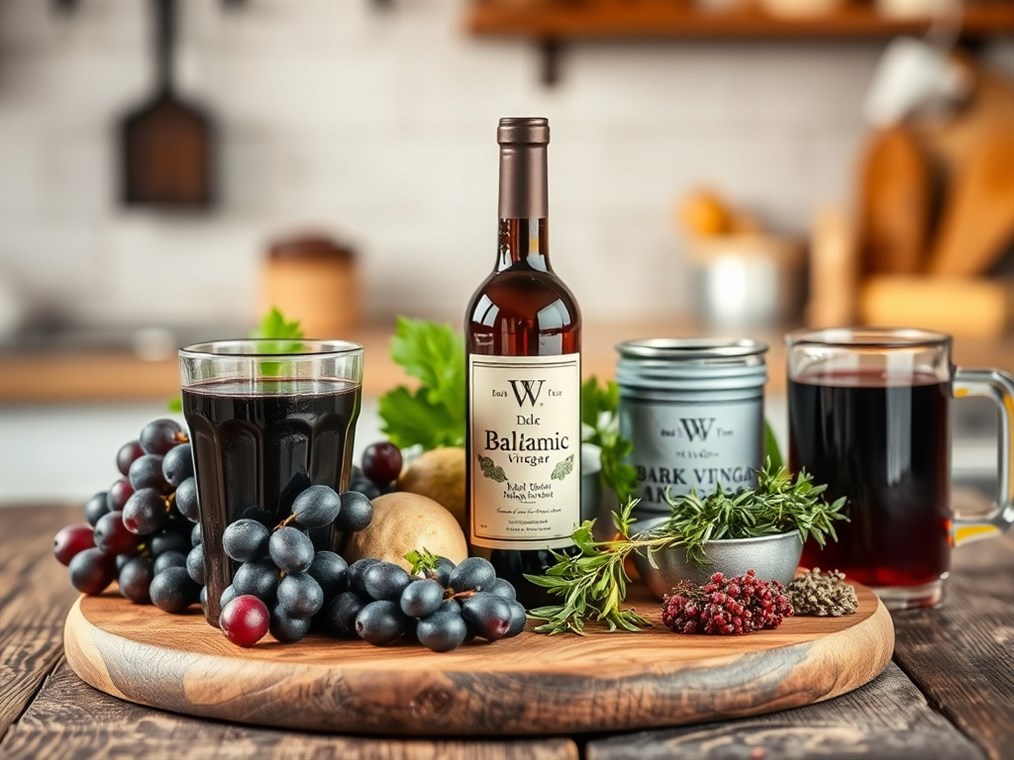Red Wine in Recipes: What to Use When the Bottle’s Empty (or You’re Not a Fan)
So, you’re staring down a recipe calling for red wine. Maybe you’re out, maybe you don’t drink, or maybe that bottle of Merlot is just too good to sacrifice to a stew. Whatever the reason, you need a substitute, right? Don’t sweat it! Cooking with red wine is all about adding depth and richness, and there are plenty of ways to achieve that even without the vino.
First things first, let’s talk about why red wine works so well in cooking. It’s not just about getting tipsy flavors. A good red wine brings acidity, tannins, and complex flavors to the party. Think dark fruits, maybe a hint of spice, and a certain je ne sais quoi that elevates everything.
Now, when it comes to picking a red wine for cooking, the golden rule is simple: use something you’d actually drink. Seriously, ditch those “cooking wines” you see in the store. They’re usually bottom-of-the-barrel stuff with added salt and who-knows-what-else. Instead, grab a decent, dry red wine.
Here’s a quick rundown of some popular choices:
- Cabernet Sauvignon: This is your big, bold, full-bodied friend. Think hearty stews, braised meats, and rich sauces. It’s got that classic blackcurrant and cedar thing going on.
- Merlot: A bit softer and fruitier than Cabernet, Merlot is super versatile. It’s great with poultry, pork, and tomato-based sauces. I always get notes of plum and chocolate with a good Merlot.
- Pinot Noir: Lighter and more delicate, Pinot Noir brings earthy notes and a lovely cherry finish. Perfect for chicken, mushrooms, and those herby sauces.
- Chianti (Sangiovese): Ah, Italy in a glass! Chianti’s bright acidity and herbal notes make it a natural for tomato sauces and all things Italian.
- Zinfandel: If you’re making barbecue sauce, chili, or slow-cooked meats, Zinfandel is your go-to. It’s juicy, peppery, and just a touch sweet.
Okay, so you’ve got your wine. Now what?
Red wine is a culinary workhorse. You can use it to:
- Marinate: Tenderize meat and infuse it with flavor? Yes, please!
- Braise: Slow-cooked meat in red wine? Fall-off-the-bone deliciousness guaranteed.
- Deglaze: That’s when you pour wine into a hot pan after searing meat to scrape up all those flavorful browned bits. Trust me, it’s liquid gold.
- Reduce: Simmering red wine with onions, garlic, and herbs until it thickens into a sauce? Pure magic.
A few tips from my own kitchen:
- Add the wine early enough so the alcohol has time to cook off. Nobody wants a boozy-tasting stew.
- For long-simmering dishes, let the wine reduce a bit after you’ve browned the other ingredients. This concentrates the flavor.
- Taste as you go! The wine’s flavors can intensify quickly.
- Don’t use that bottle of wine that’s been open for a week. It’s probably turned to vinegar by now.
- Got leftover wine? Freeze it in ice cube trays for future sauces!
Alright, let’s say you’re wine-less (or wine-averse). What are your options?
Don’t panic! There are plenty of substitutes that can do the trick.
- Beef Broth: This is a solid choice for savory dishes. Add a splash of white vinegar to mimic the wine’s acidity.
- Red Grape Juice: Surprisingly good! Again, a little vinegar will help cut the sweetness.
- Cranberry Juice: Works in a pinch, especially if you use the unsweetened stuff.
- Pomegranate Juice: Adds a sweet and tangy twist.
- Red Wine Vinegar: Use sparingly and dilute it with water, or it’ll overpower your dish.
- Tomato Juice: Another decent option, thanks to its similar acidity and color.
- Alcohol-Free Red Wine: If you want to get as close as possible to the real deal, this is your best bet.
And a couple of wild cards:
- Dry White Wine: Can work in a pinch, but you’ll miss the red color.
- Rosé: A surprisingly good substitute, offering a lighter, brighter flavor.
- Balsamic Vinegar: Be careful with this one! It’s sweet and thick, so use it sparingly.
So, there you have it! Whether you’re a seasoned wine connoisseur or a teetotaler, you can confidently tackle any recipe that calls for red wine. Just remember to focus on building flavor and don’t be afraid to experiment. Happy cooking!

